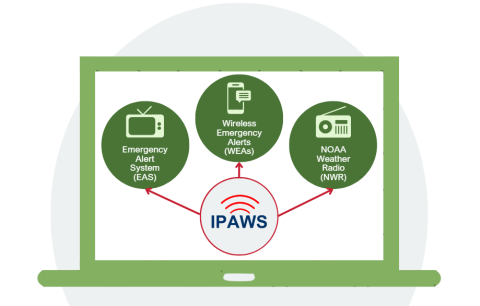
What is a Voice Over PSA?
February 12, 2024 10:26 am Leave your thoughtsFirst of all, let’s talk about what a PSA is. PSA stands for Public Service Announcement. Now, who exactly is qualified to make these, you may ask? The government? A not-for-profit organization? Well, really, anyone can. Typically though, Public Service Announcements are produced and broadcast with the intent to inform the public about issues of importance for the common good, ranging from health and safety to civic duties and environmental concerns.

FEMA’s “Integrated Public Alert & Warning System”
Some of the heavy hitters in PSA production are government agencies. They are sponsored by federal, state, or local government agencies aiming to inform the public about health warnings, emergency preparedness (“Tornado!”), voting information (“Vote for X, he handled the Tornado Crisis like a pro!”), and more.
Then you have non-profit organizations. Non-profits and charities often produce PSAs to raise awareness about their causes, such as disease prevention, environmental protection, social justice issues, and more. We’ve all seen an ASPCA ad with Sarah McLachlan crooning in the background while a basset hound jumps (in slow motion) into the loving arms of his adoptive parents, while we reach for the nearest box of tissues.
Some other folks creating PSAs are schools and universities to highlight educational programs, awareness campaigns, or community service initiatives. Next up in the PSA parade are governmental health organizations (like the CDC) and private health non-profits (like the American Heart Association) who use PSAs to spread awareness about health-related issues.
Then you have media outlets and corporations. While less common, some businesses engage in creating PSAs as part of their corporate social responsibility programs, focusing on issues that align with their values or industry.
PSAs have even reached Individuals and independent creators: With the rise of digital media platforms, individuals and small groups can also produce and distribute PSA content, although their reach might be more limited compared to organizations with more resources. The effectiveness of a PSA often depends on its ability to reach the intended audience, which is why partnerships with broadcasting networks, social media platforms, and other distribution channels are crucial.

You’ve probably heard this one before!
So, while almost anyone can create a PSA, the credibility and impact of the message can be significantly influenced by the authority and reputation of the organization or individuals behind it. Meaning, that if I made a PSA and put it on my Instagram about saving the bees, possibly no one will save the bees (at least not because of my suggestive PSA).
Now that we’ve talked about what a PSA is, let’s talk “layers.” Usually, because of what PSA commercials typically talk about, as a voice actor, I can expect some common tones and themes, such as empathy, compassion, and authority, especially when safety is a concern. I wouldn’t use my peppy “conversational millennial” read to talk about disease prevention the way I would about that awesome smell that Tide leaves in my bell bottoms.
There are some lead-in lines I tend to use when working on a PSA. So before I say the first line of the script, I might say, “I know it’s hard to hear…” or “Don’t worry, help is on the way” or “I get it.” These lead-in lines connect me to empathy and compassion, as well as the courage to tell a hard truth because a lot of PSAs are telling us hard truths about the reality of suffering or danger. But they are also often laced with so much hope, optimism, and support as well. There are layers in a PSA, just like in life. They don’t need to be complicated either. Keeping it simple and honest is a good approach for public service announcements; people will hear that and reach for some Kleenex (or lock themselves in a bunker) in no time.
We welcome you to join us for an introductory Voice Over class HERE
Tags: PSA, Public Service Announcements, Voice Actor, voice over, voiceoverCategorised in: Blog
This post was written by Simone Stevens










